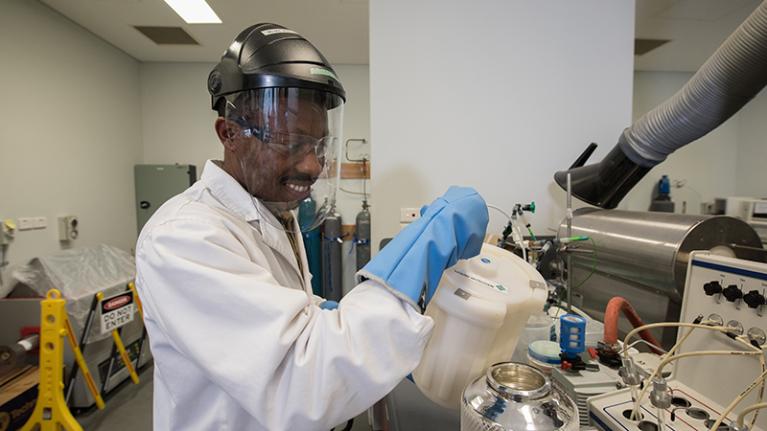Victoria University’s Biosafety Policy is designed to protect the health and safety of people and the environment from potential biosafety hazards used in teaching and research.

VU Biosafety Policy & Procedures
Download VU's Biosafety Policy & Procedures from the policy library.
The policy:
- provides a framework to ensure the safety and security of all employees, contractors, volunteers and students when dealing with potentially hazardous biological material
- ensures the University is compliant with all relevant statutes, codes and guidelines
- reinforces the University's commitment and capacity to managing the risk of unintentional release of, or human or animal exposure to:
- biological hazards
- genetically modified organisms
- biological material that is controlled, regulated or prohibited
- biologicals of security concern.
Where your work involves biological material that is controlled, regulated or prohibited, you should ensure you are familiar with the relevant VU Biosafety procedures listed below:
- Biosafety - Dealings Involving Risk Group Agents Procedure
- Biosafety - Internal Certification of Containment Laboratories Procedure
- Biosafety - Dealings Involving Genetically Modified Organisms Procedure
- Biosafety - Import, Export, Transport and Packaging of Biological Material Procedure
- Biosafety - Non-Compliance & Adverse Incidents Procedure
- Biosafety - Governance Procedure.
Biosafety compliance
Personnel who use biological material that may be a biosafety hazard need to work safely and comply with the relevant Acts, Regulations, Standards & Codes.
At Victoria University, Biosafety compliance is managed by the following Research Services staff:
- Biosafety Manager who provides advice and guidance on biorisk management and coordinates the implementation of the Biosafety Program.
- Institutional Biosafety Committee who approve high risk projects, audit and certify laboratories and review policies and procedures. The IBC is supported by the IBC Executive Officer.
To ensure all the right approvals are in place, for all teaching and research activity involving the following “dealings”, please contact the biosafety team before you commence work:
- Genetically modified organisms (GMOs)
- Biological Risk Group Agents, as defined in the Australian Standards 2243.3
- Biological material that may potentially contain biological risk group agents (e.g. human tissue, live animals, animal tissues, plants, soil, sewerage etc..)
- Security Sensitive Biological Agents
- Biological materials considered as biosecurity risks and as a consequence: may be controlled, regulated or prohibited (e.g. import and export or biological material); require permits (e.g. pest permits); or need to be used in a licenced premises (e.g. Animal. OGTR or Quarantine Facilities)
- Biological material listed on the Defence Strategic Goods List
- Biological material classified as Class 6.2 Dangerous Goods.
A “dealing” with biological material that may be a biosafety hazard is defined as:
- conducting experiments with
- making, developing, collecting, producing or manufacturing
- breeding
- propagating
- using in the course of manufacturing of something that is not a biosafety hazard
- growing, raising or culturing
- importing or exporting
- transporting
- disposing of
It includes the possession, supply or use of for the purposes of, or in the course of, a dealing mentioned in any of the paragraphs (1) to (9).
Australian Standards
- Australian Standards are recognised in common law as defining current knowledge and "best practice" for laboratory safety.
- Non-compliance with the relevant Australian Standards may result in the University or individuals being liable for civil damages.
- Australian Standards in Victoria University Procedures must be followed at all times.
- Failure to comply with University Policy breaches the University's Code of Conduct.
Acts of Parliament
- Regulations and Australian Standards mandated by an Act of Parliament must be adhered to by law.
- Non-compliance or breaches can attract severe penalties as outlined in the respective Acts.
Further information
- The VU Risk and Compliance Team maintain an updated list of regulatory requirements. Please refer to the Compliance Intranet site (login required when offsite).
- The VU Biosafety Program details procedures and guidelines that must be followed at VU to ensure biosafety compliance. View Lab Safety Guidelines (on VU Collaborate, via MyVU; login required).
- For VU OHS procedures related to hazardous materials see the People & Culture OHS Intranet site (login required when offsite).
Contact us
Biosafety Manager
Phone: +61 3 9919 4199
Email: ibc@vu.edu.au

